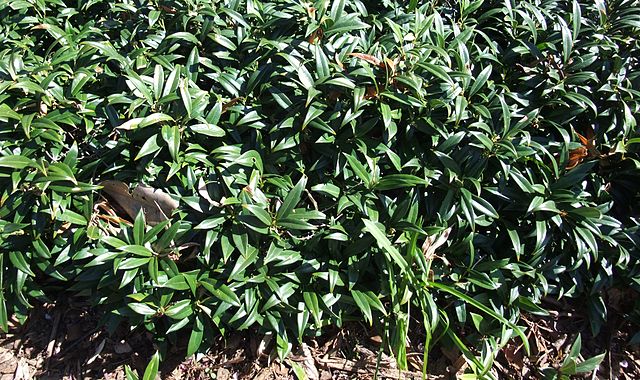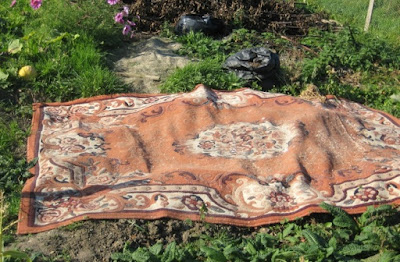 |
| Sarcococca hookeriana var. humilis |
Commonly known as the Christmas Box or Himalayan sweet box, Sarcococca hookeriana var. humilis is a popular garden choice for a winter blooming effect. Native to the Himalayas, the original species is a rarely found, erect -growing evergreen shrub and named in honour of Sir Joseph Dalton Hooker (June 1817 – December 1911), Charles Darwin's closest friend and Director of the Royal Botanical Gardens, Kew.
The 'humilis' variety is a dwarf, densely-branched selection which seldom reached 60 cm high. It was first found in Western China and was introduced to British science by Ernest Wilson in 1908. The shiny elliptic leaves are a deep green colour. The flowers are creamy-white with pink anthers and appear over the winter. Once pollinated these are followed by small black berries. While the flowers are not as attractive as spring and summer flowering specimens, this is more than made up for with the heady, honey scented fragrance that accompanies them.
Sarcococca hookeriana var. humilis will perform best in semi-shade to full shade, but it will tolerate full sun if grown in permanently moist soil conditions. It will require a sheltered position in any moderately fertile, moist but well-drained humus-rich, slightly acidic soils although it will also thrive in heavy clay and chalk. It is also tolerant of atmospheric pollution, dry shade and (which is good news for most gardeners) neglect. Newly planted specimens will need to be watered regularly until they become established.
They are relatively cold hardy and will grow fine in the warmer regions of the United Kingdom and Ireland. The further north you go you will need to consider apply cold protection.
You can also grow Sarcococca hookeriana var. humilis as a low maintenance container plant using soil based compost such as John Innes No.3.
It is generally, pest free, trouble free and does not require regular pruning. However you can remove any unwanted suckers from the base of the plant. If you do need to prune the do so in the spring after flowering has finished.
For related articles click onto the following links:
HOW TO GROW THE CHRISTMAS BOX - Sarcococca hookeriana var. humilis











